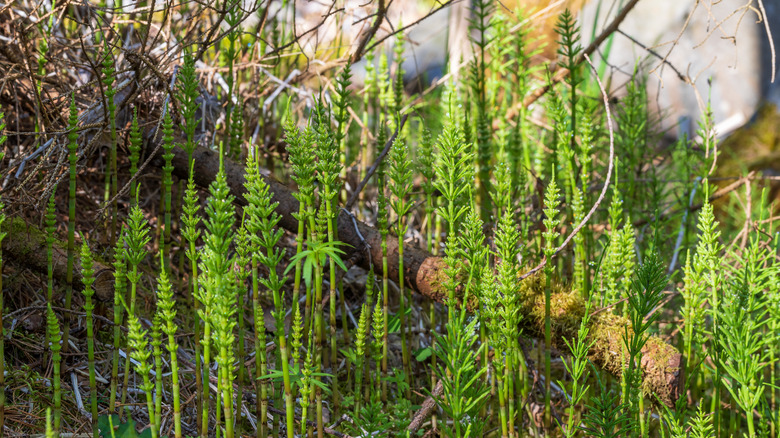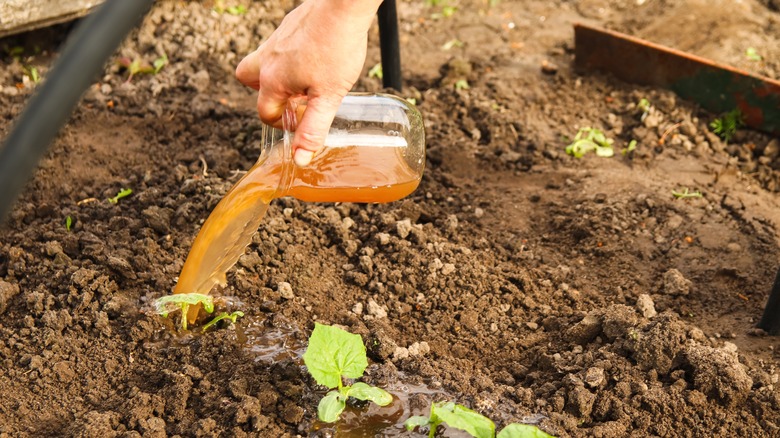How To Keep Horsetail Weeds Out Of Your Lawn
Horsetail weed is a persistent intruder that can be challenging to eliminate from your garden or lawn. When you first see the young green shoots, you may be inclined to pull them out immediately. However, proceed with caution, as yanking out these young shoots may provide only temporary relief. Pulling out fully grown horsetail plants from the ground is even worse, as it can spread the roots and make removing this stubborn weed from your yard even more difficult and time-consuming. It's like stirring up a hornet's nest, making the problem more aggressive and difficult to manage in the long run.
So, what's the solution? The ultimate goal is to create unfavorable conditions for the weed to grow. To combat this unwanted garden guest, you must adopt a comprehensive soil improvement strategy. Since horsetail thrives in poorly drained, low pH soils, your elimination strategy should involve three key steps: enhancing the soil's drainage capabilities, increasing its pH levels, and improving its overall fertility. By using a strategic, multi-step approach, it is less likely for horsetail to thrive, giving you a more lasting solution to this persistent issue. However, it's important to remember that this is an ongoing effort, not a one-time fix, and that you'll need to make the necessary adjustments.
Enhancing soil drainage and raising pH levels
If you're dealing with horsetail weed, the first step toward reclaiming your garden is to improve your soil's drainage. Poor drainage not only causes inconvenience but also encourages the growth of horsetail weed by creating stagnant water or soggy spots. If you notice low-lying areas in your garden that tend to accumulate water, your primary task is to eliminate these breeding grounds by introducing pathways that guide water away instead of letting it pool. You can add soil to elevate them or install drainage solutions to ensure that water disperses effectively, particularly during heavy rainfall when water pooling is most likely.
Once you have upgraded your drainage system, it's time to address the pH level of your soil. Horsetail weed has a particular fondness for acidic soil conditions. Therefore, your objective is to shift the pH scale away from acidic and aim for a neutral or slightly alkaline environment. One practical way to accomplish this is by applying dolomite lime to your garden. However, before doing so, it's advisable to perform a soil test to determine the baseline pH level and guide you on how much lime to apply. Once you've gathered this crucial information, apply dolomite lime, following the guidelines indicated on the product package or the recommendations from your soil test results.
Boosting soil fertility with nitrogen-based fertilizers
Once you have addressed drainage and pH issues, focus on improving the overall fertility of your soil. A fertile lawn acts like an impenetrable fortress against all types of weeds, including stubborn horsetail. One highly effective way to boost the health and vigor of your lawn is to apply nitrogen-based fertilizers. Nitrogen is a key nutrient for grass growth and helps in making it lush and robust. The best part? While nitrogen supercharges your grass, it does nothing to benefit horsetail weed, making your healthy lawn an inhospitable host for this pest.
To apply nitrogen-based fertilizers, follow the comprehensive guidelines provided on the product packaging, including the optimal times and amounts for application. If you have cool-season grasses, fertilize in the spring or fall. For warm-season grasses, fertilize during summer. Note that nitrogen-based fertilizers come in various formulations: some are slow-release types that gently and consistently nourish your lawn over an extended period, while others are fast-acting and require more frequent applications. Regardless of the type, the ultimate goal is to enhance the health and resilience of your lawn, making it a more formidable opponent against horsetail weed. A thick, vigorous lawn crowds out the weed, denying it the space and resources it needs to establish a stronghold.


